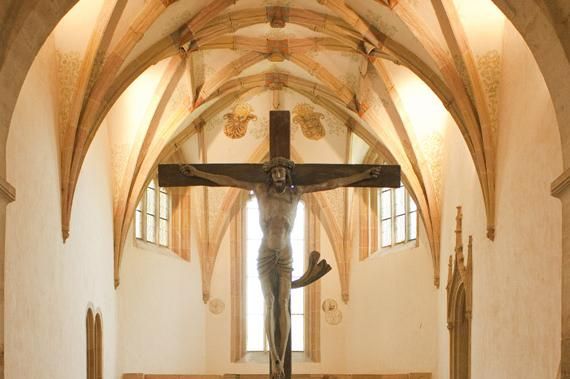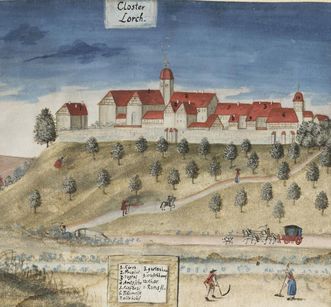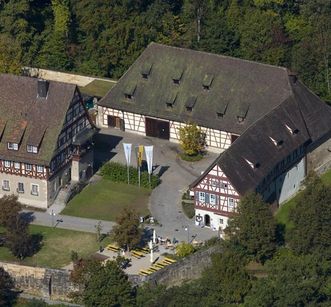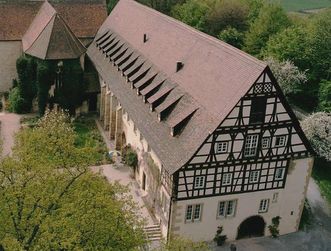An image unchanged by the centuries
A proud Romanesque church tower, a mighty church building, large tile roofs with dormers, all surrounded with a high stone wall: these things make Lorch Monastery visible even from far way, rising over the Rems river valley. As in a fortified city, a circular rampart with round towers surrounds the entire monastery grounds. They initially surrounded a smaller area. The larger rampart dates from the 13th century and was modernized at the beginning of the 16th century.






